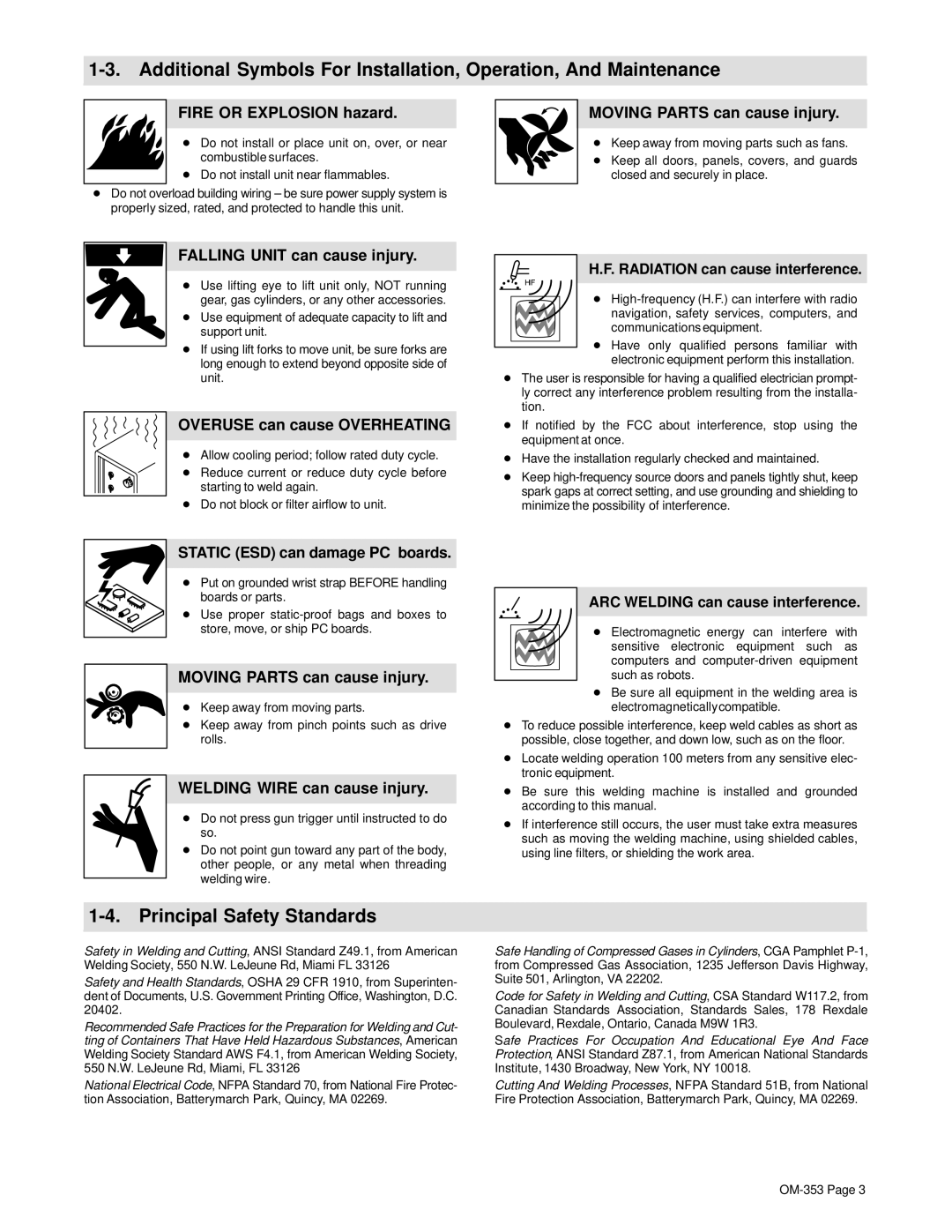OM-353 specifications
The Hobart OM-353 is a powerful and efficient mixer designed for commercial kitchen environments. Renowned for its durability and high-performance capabilities, this heavy-duty equipment revolutionizes the mixing process, ensuring consistent results for a variety of recipes. The OM-353 combines innovative technology and user-friendly design, making it an essential tool for chefs and kitchen staff alike.One of the standout features of the Hobart OM-353 is its robust motor. With a horsepower of 1.5, it delivers impressive torque, allowing it to handle dense mixtures and heavy doughs with ease. This capability is particularly valuable in high-volume settings, where efficiency and time-saving are crucial. The mixer is equipped with three fixed speeds, enabling operators to select the appropriate speed for different mixing tasks, from slow folding to high-speed whipping.
The bowl capacity of the OM-353 is another significant characteristic, accommodating up to 35 quarts. This large capacity is ideal for batch processing, allowing commercial kitchens to mix substantial quantities of ingredients simultaneously. The mixer features a sturdy stainless steel bowl, providing durability and resistance to wear while being easy to clean and maintain.
In terms of technology, the Hobart OM-353 incorporates a unique planetary mixing action that ensures thorough ingredient incorporation. The mixing attachments, which include a wire whip, flat beater, and dough hook, are designed to maximize efficiency and ensure every ingredient is evenly combined. The user controls are straightforward, featuring an easy-to-use lever for raising and lowering the bowl, along with a safety guard that prevents accidental operation.
Safety is a key consideration in the design of the OM-353. The mixer is equipped with an overload protection system that automatically shuts off the motor in case of excessive load, preventing potential damage. Additionally, its robust construction and stability reduce the risk of tipping during operation, ensuring a safe working environment.
The Hobart OM-353 embodies the ideal blend of power, performance, and safety, making it a staple in many professional kitchens. Its ability to adapt to various mixing needs, combined with its heavy-duty construction, ensures that chefs can rely on this mixer for consistent and high-quality results in their culinary creations. Whether used in bakeries, restaurants, or catering services, the Hobart OM-353 stands out as an indispensable tool for achieving excellence in food preparation.

